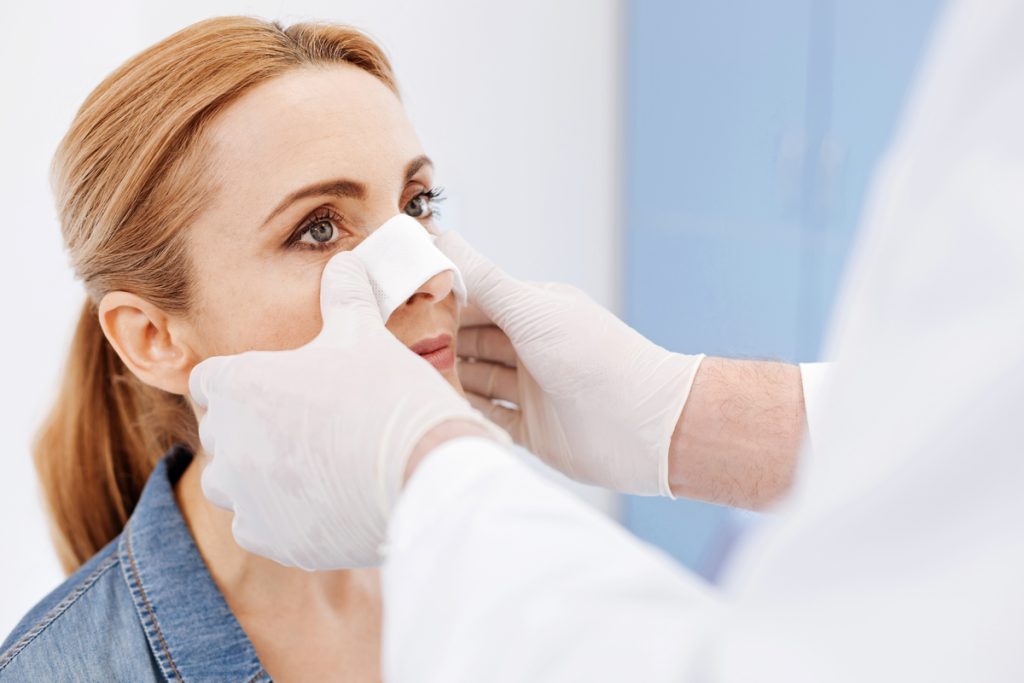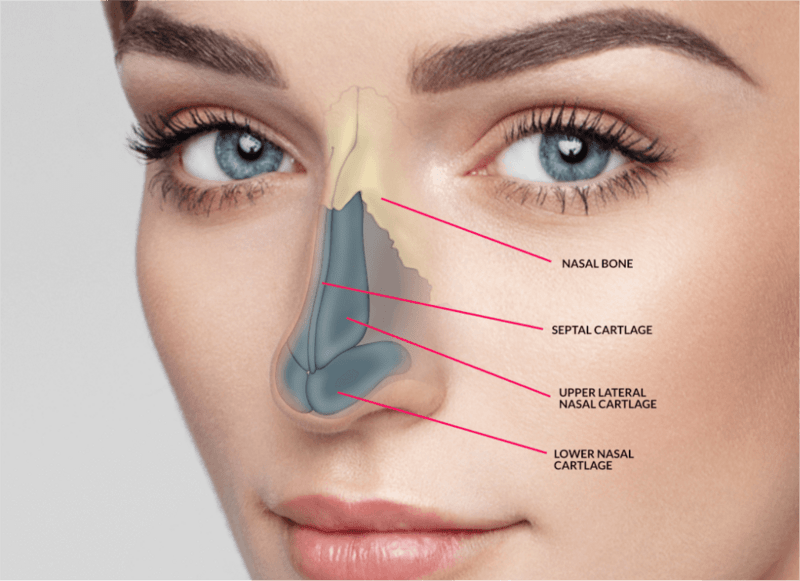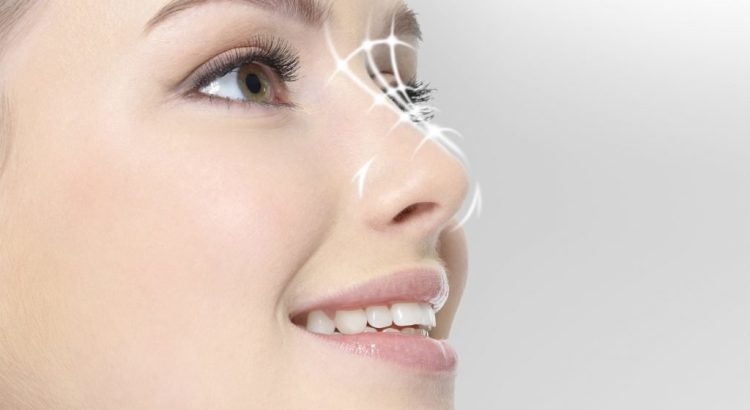Are you considering rhinoplasty? This popular cosmetic surgery can enhance the appearance and function of your nose, but it’s important to be well-informed and prepared for the process. From pre-surgery preparation to long-term recovery, there are many factors to consider to ensure a successful outcome. In this blog post, we’ll cover everything you need to know about preparing for rhinoplasty, post-surgery care instructions, managing pain and discomfort, recognizing signs of infection, reducing swelling and bruising, and long-term recovery and results. Whether you’re in the early stages of considering rhinoplasty or are scheduled for surgery, this comprehensive guide will help you navigate the process with confidence.
Contents;
Preparing For Rhinoplasty

Undergoing a rhinoplasty, or nose reshaping surgery, is a big decision. Whether you’re seeking to correct a breathing issue, enhance your facial features, or improve your self-confidence, proper preparation is essential for a successful outcome. Here are some important steps to follow as you prepare for your rhinoplasty procedure.
Educate Yourself: Before embarking on any surgical journey, it is crucial to equip yourself with knowledge. Research various aspects of rhinoplasty, including the procedure itself, potential risks and complications, recovery process, and expected outcomes. Familiarize yourself with different surgical techniques and consult with a qualified plastic surgeon who has expertise in rhinoplasty.
Choose the Right Surgeon: Selecting the right surgeon is paramount to a satisfying rhinoplasty experience. Look for a board-certified plastic surgeon with extensive experience in performing rhinoplasty procedures. Research their credentials, read patient reviews, and schedule an initial consultation to discuss your goals, concerns, and expectations.
Communicate Clearly: During your consultation, be open and honest with your surgeon about your desired outcome. Explain why you are seeking rhinoplasty and what specific changes you hope to achieve. A skilled surgeon will listen attentively, provide realistic expectations, and tailor the procedure to your unique needs and facial structure.
- Follow Pre-Operative Instructions:
| Do’s | Don’ts |
|---|---|
| • Follow your surgeon’s advice regarding medications and supplements to avoid, such as blood thinners. | • Do not smoke or use any tobacco products, as they can impair healing and increase the risk of complications. |
| • Arrange for someone to drive you to and from the surgical facility on the day of the procedure. | • Avoid excessive sun exposure and use sunscreen to protect your skin. |
| • Ensure you have a comfortable recovery area set up at home, including extra pillows to elevate your head. | • Do not eat or drink anything after midnight the night before your surgery, as instructed by your surgeon. |
By carefully following your surgeon’s pre-operative instructions, you can minimize any potential risks and optimize your chances of a smooth recovery.
Prepare Emotionally and Physically: Besides physical preparation, it’s essential to be emotionally prepared for your rhinoplasty journey. Understand that swelling, bruising, and temporary discomfort are common during the recovery process. Take the time to evaluate your expectations and be patient with the healing process; results take time to fully manifest.
Arrange for Support and Assistance: While many individuals lead independent lives, your rhinoplasty recovery will likely require some assistance. Arrange for a responsible adult to accompany you to the surgical facility on the day of the procedure and help you during the initial days following surgery. Having someone to provide emotional support, help with daily tasks, and ensure you follow post-operative care instructions can significantly ease your recovery experience.
Preparation is key when it comes to rhinoplasty. By educating yourself, selecting the right surgeon, following pre-operative instructions, and preparing both physically and emotionally, you can set yourself up for a successful and satisfying rhinoplasty experience.
Post-Surgery Care Instructions

After undergoing rhinoplasty, the recovery process plays a vital role in achieving desired results. Post-surgery care instructions are crucial in promoting healing, minimizing the risk of complications, and optimizing the final outcome. Following these instructions diligently can make a significant difference in the recovery journey.
Firstly, it is essential to keep your head elevated for the first few days after surgery. This helps reduce swelling and minimize discomfort. Using two to three pillows while sleeping can provide the necessary elevation. Avoid putting pressure on the treated area to safeguard the delicate nasal structure.
LI and Table Example:
- Avoid blowing your nose for the initial few days as sneezing or blowing too forcefully can disrupt the healing process.
- Gently clean the incision areas with a saline solution as advised by your surgeon. This helps keep the area clean and prevent infections.
- Ensure regular consumption of prescribed medications, such as antibiotics or pain relievers, as per the given schedule.
| Rhinoplasty Do’s | Rhinoplasty Don’ts |
|---|---|
| Follow your surgeon’s post-operative instructions carefully. | Avoid excessive sunlight exposure or tanning beds during the recovery period. |
| Stay hydrated to aid the healing process. | Avoid strenuous activities, including exercise, for at least a few weeks post-surgery. |
Another crucial aspect of post-surgery care is to attend follow-up appointments with your surgeon. These appointments allow the surgeon to assess the progress, remove any external splints or dressings, and address any concerns or queries you may have. Compliance with follow-up visits is vital for ensuring a smooth recovery.
It’s important to note that everyone’s recovery process varies, and therefore, the post-surgery care instructions may vary as well. Your surgeon will provide you with personalized guidelines based on your specific case. Following these instructions diligently is essential for a successful recovery and achieving the best possible outcome from your rhinoplasty procedure.
Managing Pain And Discomfort
Undergoing any surgical procedure can result in pain and discomfort during the recovery period. Rhinoplasty, or nose reshaping surgery, is no exception. It is essential to be prepared and have a plan in place to effectively manage pain and discomfort during your recovery. Here are some tips and guidelines to help you in managing post-operative pain and discomfort after your rhinoplasty procedure:
1. Take prescribed pain medication: Your surgeon will prescribe pain medication to help alleviate any discomfort you may experience. It is important to follow their instructions carefully and take the medication as directed. This will ensure that you stay on top of your pain management and can focus on healing.
2. Apply cold compresses: Applying cold compresses to the surgical area can help reduce swelling and alleviate pain. Use a clean towel, wrap ice packs or frozen peas in it, and gently apply it to your nose for short periods at a time. Be sure to follow your surgeon’s recommendations on how often and for how long to use cold compresses.
3. Elevate your head during sleep: Elevating your head with extra pillows or using a wedge pillow can help reduce swelling and alleviate discomfort. Keeping your head elevated will also improve blood circulation and assist in a quicker recovery.
4. Avoid strenuous activities: Engaging in strenuous activities or exercise can exacerbate pain and discomfort. It is important to rest and avoid activities that may put strain on your nose for at least a few weeks after surgery. Follow your surgeon’s guidelines for when it is safe to resume normal activities.
- Talk to your surgeon: If you are experiencing prolonged or severe pain, it is essential to communicate with your surgeon. They will be able to assess your situation and provide you with appropriate guidance and solutions to manage your pain and discomfort effectively.
| Signs of Infection: | Reducing Swelling and Bruising: | Long-Term Recovery and Results: |
|---|---|---|
| • Persistent redness, warmth, or swelling | • Apply arnica gel or cream as recommended by your surgeon | • Follow-up appointments with your surgeon |
| • Increasing pain or tenderness | • Avoid sun exposure and wear sunscreen to prevent additional swelling | • Maintaining a healthy lifestyle to support healing |
| • Pus or drainage from the surgical site | • Minimize salt intake to reduce fluid retention | • Patience and understanding that final results may take several months to a year to fully manifest |
By implementing these strategies, you can effectively manage pain and discomfort during your post-rhinoplasty recovery period. Remember, each individual’s recovery process is unique, so it is important to consult with your surgeon for personalized advice and guidance.
Recognizing Signs Of Infection

When it comes to recovering from any surgery, including rhinoplasty, it is important to be aware of the potential risks, such as infection. While infections are relatively rare after rhinoplasty, it is still crucial to recognize the signs early on to ensure prompt treatment and a successful recovery.
Infections can occur when bacteria enter the body through incision sites or other openings during or after surgery. It is essential to closely monitor your body for any unusual symptoms that might indicate an infection. Some of the common signs of infection after rhinoplasty include:
- Increased pain or discomfort
- Redness and warmth around the incision site
- Swelling that worsens or persists beyond the initial recovery period
- Drainage or pus-like discharge from the incision
- Foul odor around the surgical site
If you experience any of these symptoms or have concerns about the possibility of an infection, it is important to contact your surgeon immediately. Prompt medical attention can help prevent the infection from spreading and causing further complications.
In some cases, your surgeon may prescribe antibiotics or recommend other treatment measures to address the infection. It is crucial to follow their instructions diligently and attend any follow-up appointments to ensure proper healing.
During your recovery period, it is essential to maintain good hygiene practices and avoid touching or scratching the surgical area. Keep the incisions clean and dry as instructed by your surgeon.
While infections can be concerning, it is important to remember that they can often be successfully treated if detected early and managed effectively. By staying vigilant and being proactive in recognizing the signs of infection, you can help ensure a smooth recovery process and achieve the best possible results from your rhinoplasty procedure.
Reducing Swelling And Bruising
After undergoing a surgical procedure, such as rhinoplasty, it is common to experience swelling and bruising. Swelling occurs as a natural response of the body to the trauma caused by surgery, while bruising is a result of blood vessels being damaged during the procedure. While these side effects are to be expected, there are steps you can take to help minimize swelling and bruising and promote faster recovery.
1. Elevate Your Head: Keeping your head elevated while resting or sleeping can help reduce swelling. Prop yourself up with pillows to ensure your head is raised above your heart level. This position facilitates improved blood circulation and limits the accumulation of fluid in the facial tissues.
2. Apply Cold Compress: Applying cold compresses to the affected area can help numb the tissues, constrict blood vessels, and reduce swelling. Wrap an ice pack or frozen peas in a clean cloth and gently place it on the swollen areas for around 10-15 minutes at a time. Be sure to take breaks in between to avoid skin irritation.
3. Follow Medication Instructions: Your surgeon may prescribe pain medications or anti-inflammatory drugs to manage post-surgical discomfort and swelling. It is crucial to strictly follow the medication instructions provided by your surgeon. Taking medication as prescribed can reduce swelling and bruising and promote a more comfortable recovery.
4. Avoid Excessive Physical Activity: Engaging in strenuous activities or exercises can exacerbate swelling and bruising and slow down your recovery process. It is important to avoid rigorous activities, heavy lifting, or anything that puts strain on your nasal area for the recommended duration provided by your surgeon.
- 5. Consume a Healthy Diet: A well-balanced diet rich in fruits, vegetables, and lean proteins is essential for proper healing and reducing swelling and bruising. Foods with anti-inflammatory properties, such as pineapple, turmeric, and ginger, can be beneficial in minimizing swelling and accelerating recovery.
| Swelling and Bruising: | Recovery Time: |
|---|---|
| Mild to Moderate Swelling and Bruising | Average of 1 to 2 weeks |
| Severe Swelling and Bruising | Can persist for up to 3 weeks |
Remember, each individual’s recovery is unique, and the severity and duration of swelling and bruising may vary. It is essential to consult with your surgeon and follow their specific instructions to ensure a successful recovery process. By implementing these strategies and giving your body the time it needs to heal, you can effectively reduce swelling and bruising, leading to a smoother and quicker recovery from rhinoplasty or any other surgical procedure.
Long-Term Recovery And Results
Recovering from rhinoplasty surgery involves various stages, with each phase contributing to the overall long-term recovery and results. While the initial phase mainly focuses on post-surgery care instructions and managing pain and discomfort, the long-term recovery stage plays a crucial role in achieving the desired outcome. This phase involves recognizing signs of infection, reducing swelling and bruising, and ultimately, enjoying the transformed appearance of your nose.
One of the key aspects of long-term recovery after rhinoplasty is recognizing signs of infection. Although rare, infections can occur after surgery and it is important to be aware of the symptoms. These may include increased pain, swelling, redness, and warmth in the surgical area. If you experience any of these signs, it is essential to contact your surgeon immediately for proper evaluation and treatment.
In addition to infection, swelling and bruising are common temporary side effects of rhinoplasty. While these are expected in the immediate post-surgery phase, taking steps to reduce their occurrence and duration can vastly improve the long-term results. Following your surgeon’s instructions regarding icing, elevation, and avoiding certain activities can aid in minimizing swelling and bruising, allowing your nose to heal properly and enhance the final outcome of your surgery.
- Use the table html tag to showcase before and after photos of rhinoplasty results. This not only highlights the long-term recovery and results, but also provides visual evidence of the transformative changes that can occur after the procedure.
